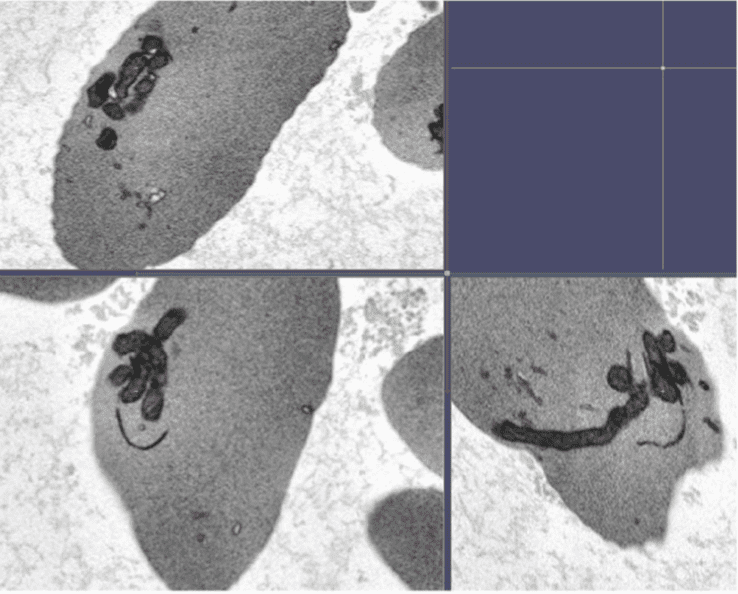A new study from the National Institutes of Health offers more insight into the cause of pain and inflammation in people with sickle cell disease and could lead to new treatment options.
Researchers discovered DNA from the mitochondria — the “powerhouse of the cell,” if you remember your biology class — acts as a danger signal in the body and triggers inflammation.

The study, published in March in the journal Blood, could help scientists better understand how to stop the chronic inflammation that often comes with sickle cell disease.
Normally, red blood cells get rid of their mitochondria when they mature because the cell no longer needs that energy. Researchers looked at people with sickle cell anemia — the most common type of sickle cell disease — and found their red blood cells keep the mitochondria. That can lead to a buildup of chemical molecules that stress the cells.
This condition disrupts the way cells are supposed to function, leading to inflammation.
Gary Gibson, president and CEO of the Martin Center Sickle Cell Initiative, said this research represents another step forward for people living with sickle cell disease.
“Hopefully what it means is one day we’ll have to go out of business,” he said with a laugh.
Swee Lay Thein, chief of the Sickle Cell Branch at the National Heart, Lung, and Blood Institute (NHLBI), hopes the findings can help doctors and other researchers measure the effectiveness of medicine meant to curb pain and inflammation.
The next step: Researchers want to start testing drugs that target mitochondrial DNA and the inflammation process.
That will be a delicate undertaking, though. Thein and her team were able to block the formation of neutrophil extracellular traps, or NETs, which have a role in a specific inflammatory process but also help the immune system fight infections.
Thein said it’s possible to block the negative function of NETs without compromising the immune system, but any medication still has “quite a way to go.”
When the time comes, Gibson said it’s possible patients won’t get the full benefits of a new medication because there isn’t enough information on the provider side.
“We still are worried that providers in general don’t know enough about sickle cell disease, and they also do not know enough about how to treat sickle cell disease,” he said.
The Martin Center will host its annual conference from 8:30 a.m. to 12:30 p.m. April 23 on the organization’s Facebook page. The focus this year is how new treatment options can improve the quality of life for younger patients.
Contact staff writer Tyler Fenwick at 317-762-7853. Follow him on Twitter @Ty_Fenwick.










